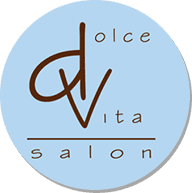Balayage vs. Highlights: Finding your Next Best Look
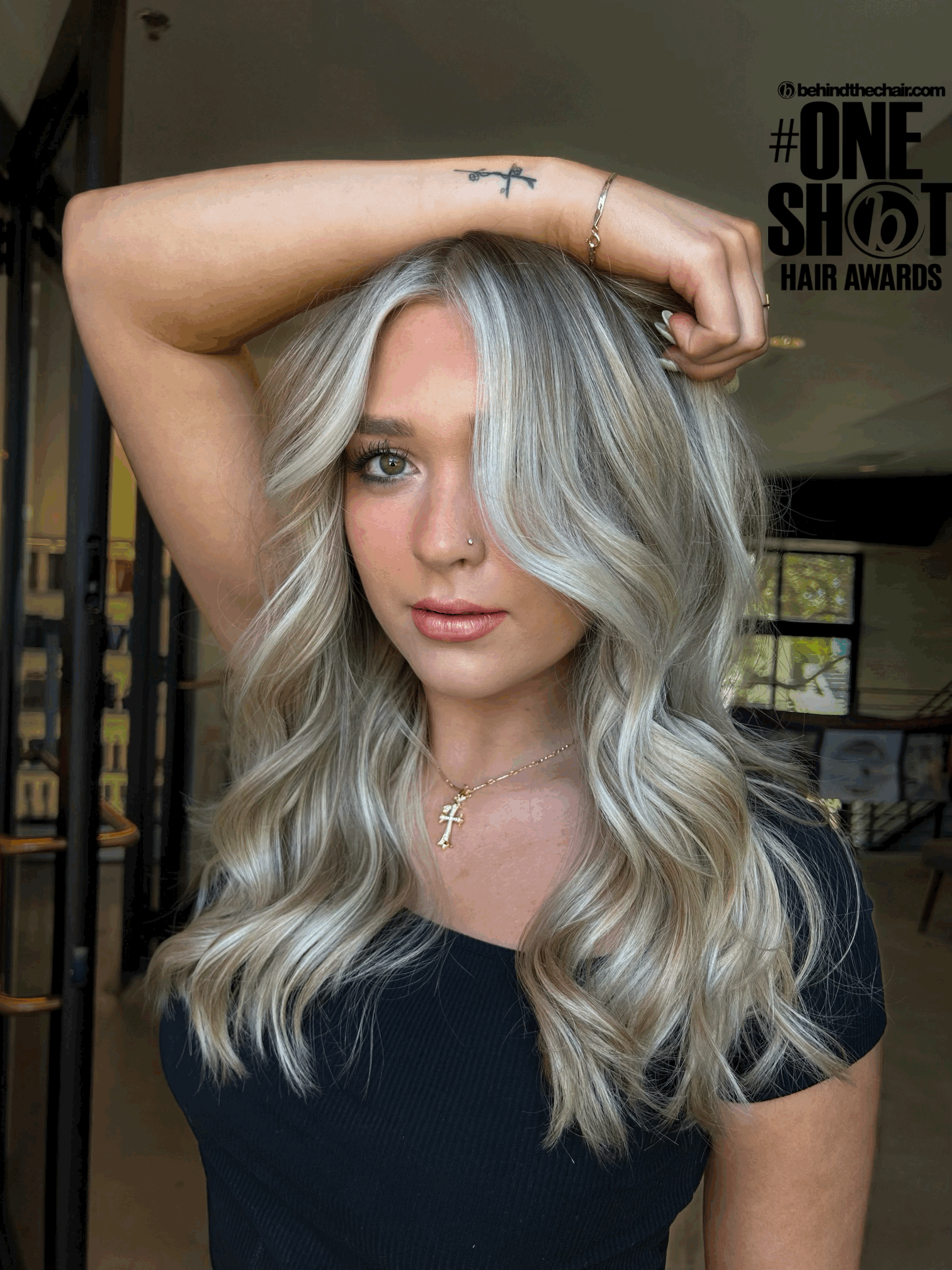
Here’s the summary:
Balayage is a hair coloring technique where color is painted onto the hair freehand, creating a natural, sun-kissed look. Unlike traditional foils, it results in softer, blended highlights that grow out more subtly, making it low-maintenance.
Suitable for all hair types, balayage allows for personalized color placement and versatile styles like ombre and lived in looks.
Highlights are a hair coloring technique where specific strands are lightened to add contrast and dimension. Achieved using foils, they can be customized for subtle or dramatic effects.
Types include traditional highlights, lowlights (darker shades), partial highlights (only certain areas), and full highlights (entire head). Highlights enhance hair’s fullness and require regular maintenance.
In this article, you’ll see examples of both techniques, learn more about each one, and have everything you need to make the best decision for your next look.
What is Balayage?
Balayage is a hair coloring technique that originated from the French word “balayer,” which means “to sweep” or “to paint.” This technique allows for a more natural, sun-kissed look, as it creates a graduated, blended effect rather than uniform streaks.
Unlike traditional foil highlights, balayage highlights are applied freehand, giving the stylist more creative control to tailor the look to each individual’s hair type and desired outcome.
The balayage technique begins with sectioning the hair into different parts. Starting at the bottom sections, small subsections of hair are hand painted with the lightener, beginning a few inches from the roots and saturating more towards the ends to create a gradient effect.
The lightener is blended upward to avoid harsh lines. This process is repeated throughout all sections, varying the thickness and placement of highlights.
Your stylist will wrap the hair in foil or plastic wrap to enhance the effect. Once processed, the hair is rinsed thoroughly, and a toner or multiple toners (a color melt) may be applied to neutralize any brassy tones. This technique results in natural-looking, sun-kissed highlights tailored to each client’s preferences.
Partial Balayage vs Full Balayage
Partial Balayage
Focuses on specific sections of the hair, typically the top layer, front pieces, and sometimes the sides, leaving the underneath layers untouched. This results in a subtler, more natural look that enhances the hair’s natural color and provides a lighter, brighter appearance without a dramatic overall change. The technique is ideal for adding face-framing highlights and a touch of brightness.
Partial balayage is lower maintenance compared to full balayage, with less noticeable regrowth, making it a suitable choice for those who want a more effortless and natural look. This is also a great choice for those who have a darker colour and for those who want a subtle balayage.

Full Balayage
In a full balayage, highlights are applied throughout the entire head of hair, from roots to ends, including the back sections, sides, and top layers, ensuring a comprehensive, all-over lightened effect. This hair color technique results in a more dramatic and noticeable change, creating an overall lighter appearance with added dimension and depth.
The highlights blend seamlessly throughout the hair for a uniform sun-kissed glow. Full balayage might require less frequent touch-ups compared to traditional highlights because the regrowth is less obvious, but the initial session takes more time and can be more costly due to the extensive coverage.
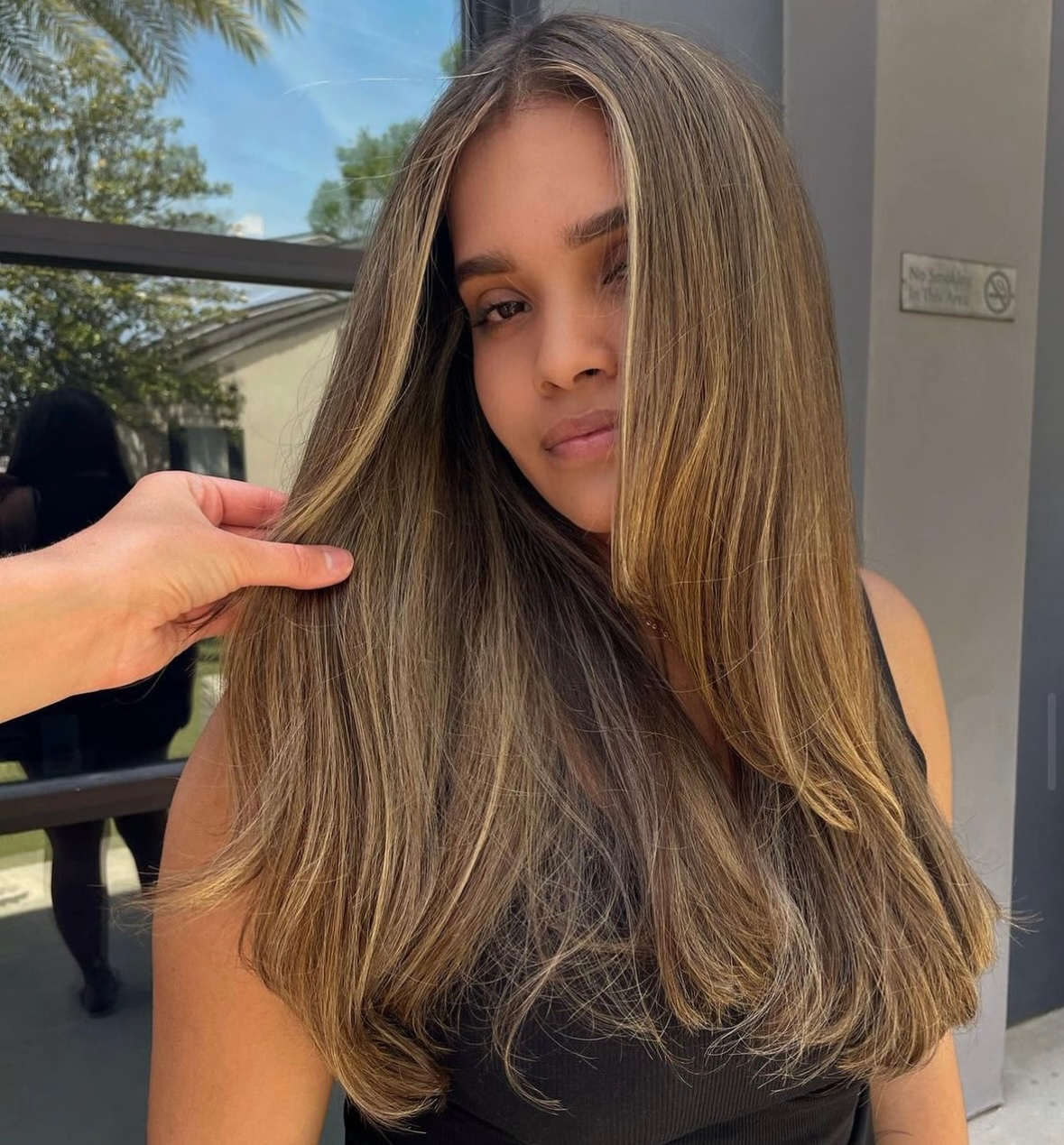
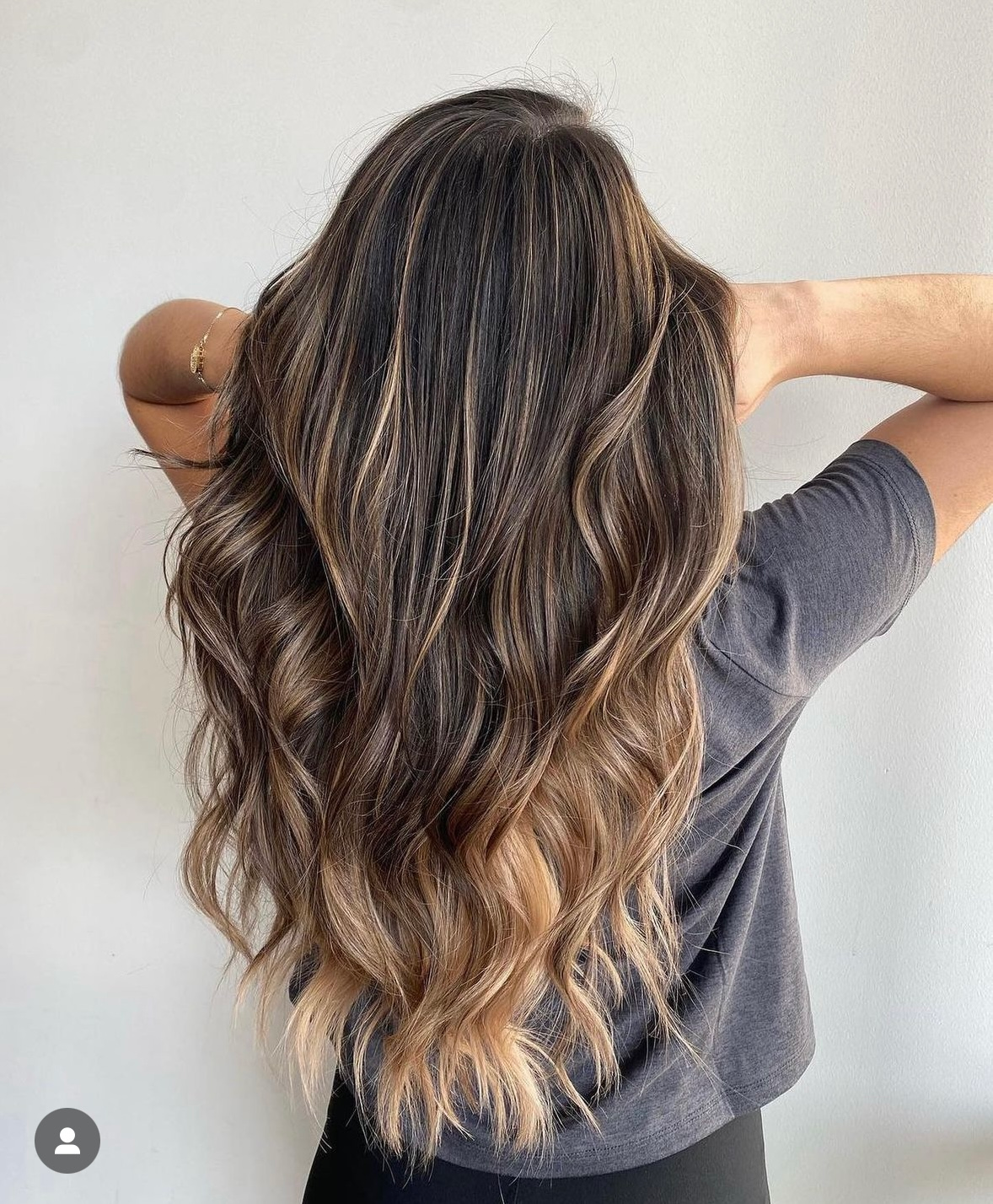
When choosing between full and partial balayage, consider several factors. If you want a significant transformation with a noticeable lightened effect, a full balayage is ideal, while a partial balayage is better for a more understated change.
Full balayage involves more processing, which can be taxing on the hair, so if your hair is already damaged or prone to breakage, a partial balayage might be a gentler option. Maintenance is another consideration; partial balayage usually requires less frequent touch-ups.
Additionally, budget is important, as full balayage sessions are typically more expensive due to the time and product involved, whereas partial balayage can be more budget-friendly.
Ideal hair types and textures for balayage
- Medium to Long Wavy Hair: This type is considered ideal as the waves enhance the multi-dimensional effect of balayage. Short pixie cuts, for example, is not an ideal hair length for balayages.
- Medium to Long Straight Hair: Allows for a smooth transition of color, though the effect is more subdued compared to wavy or curly hair.
- Curly Hair: Balayage on curly hair provides a vibrant, textured look, with the curls highlighting the different tones.
- Thick Hair: Offers a substantial canvas for the colorist to work with, allowing for more depth and dimension.
- Healthy Hair: Regardless of length and texture, healthy hair ensures the best results and minimizes damage from the bleaching process.
What are Highlights?
Highlights are a hair coloring technique where specific sections of hair are lightened to create contrast and dimension. The traditional method involves selecting precise hair strands and applying a lightening agent to them. There are many different methods and applications to apply highlights.
During the highlighting process, foils are typically used to separate and wrap the sections of hair being lightened. This helps in preventing the lightener from bleeding onto the surrounding hair and ensures precise application.
Partial Foil vs Full Foil highlights: What’s the difference?
Partial foil
involves applying highlights to only specific sections of the hair, typically focusing on the top layer, front pieces, and sometimes the sides. It’s ideal for a subtle enhancement and requires less time and product compared to full foil.
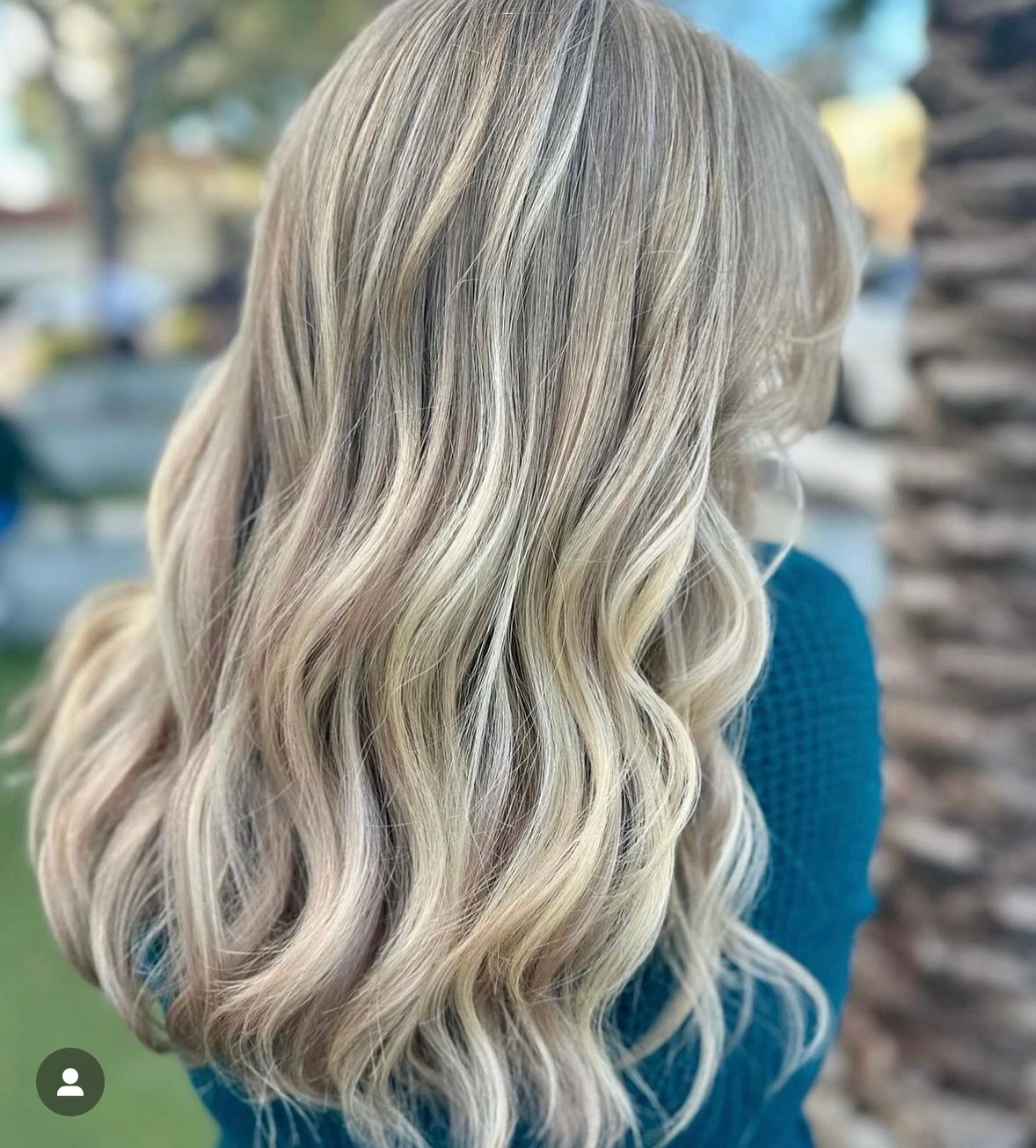

Full foil
involves highlighting the entire head of hair, providing a more dramatic and noticeable change with highlights covering both the top and bottom layers. This is how you achieve blonde hair.
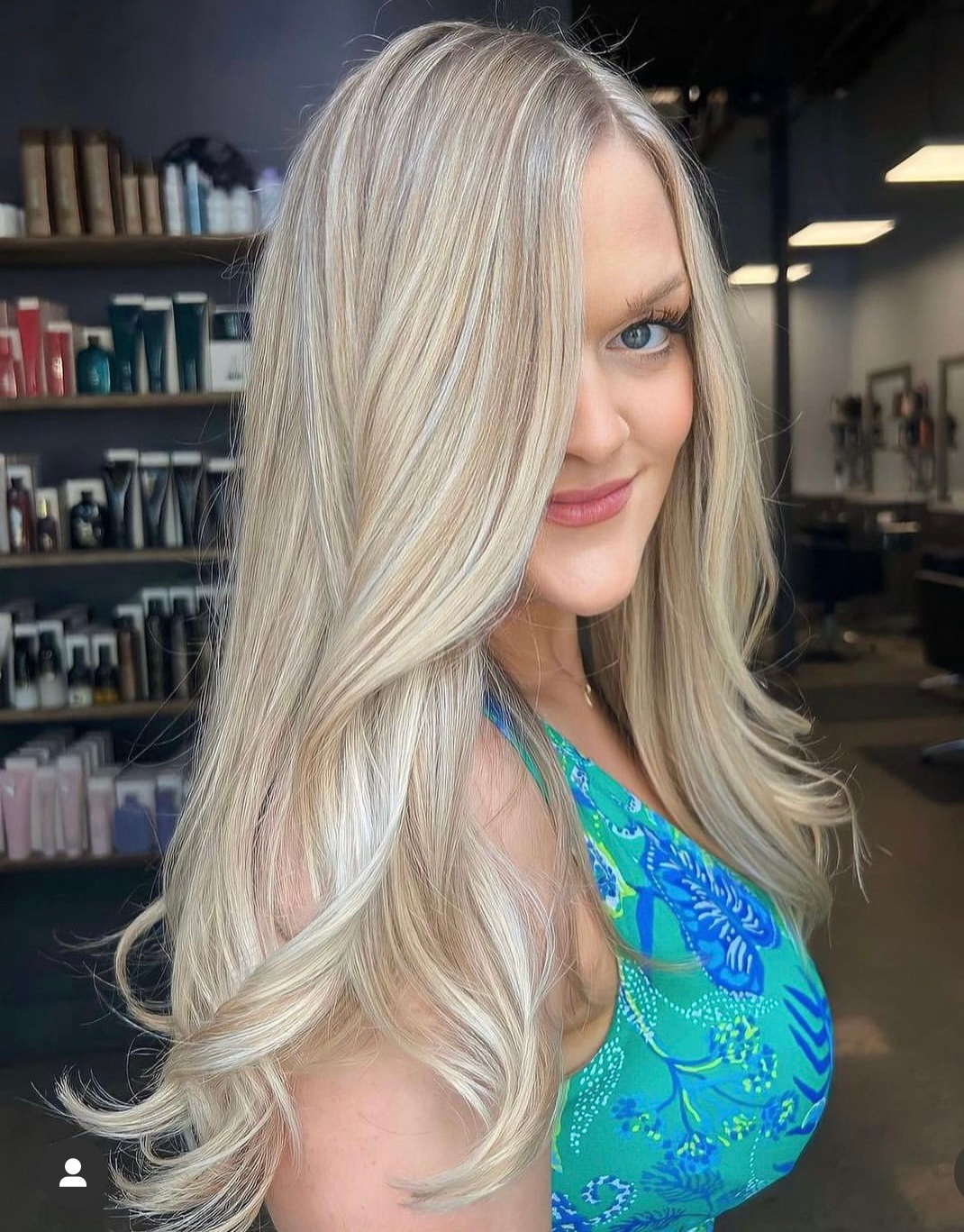
Traditional foil highlights can create a dramatic contrast, especially when the lightened sections are significantly lighter than the base color. This effect is ideal for those looking to make a bold statement with their hair color.
Mini Foil
A mini foil is another form of highlights where small, specific sections of hair are lightened using foils. This method targets only particular areas, such as around the face or the crown, to create subtle highlights and add dimension without a full head of highlights.
It offers a more localized and less dramatic effect compared to traditional full or partial foiling.
Babylights
This technique involves applying very thin, delicate streaks of color throughout the hair to create a soft, sun-kissed look with a natural blend and minimal contrast.
Babylights add dimension and brightness without drastic changes.
Ideal hair texture and types for highlights
- Medium to Long Straight or Wavy Hair: These hair types provide a smooth canvas for highlighting and allow for even distribution of color.
- Light to Medium Hair Colors: Highlights show up more prominently on lighter hair colors, creating a striking contrast and adding brightness to the overall look.
- Healthy Hair: Highlighting should be done on hair that’s in good condition to minimize damage and maintain the integrity of the hair shaft.
- Various Lengths and Textures: Highlights can be tailored to suit different hair lengths and textures, from finer hair to short and straight to long and curly. Customization is key to achieving the desired look.
Best results and styles
- Light to Medium Hair Colors: Highlights show up best on light to medium hair colors, such as blonde, light brown, or medium brown. The contrast between the base color and the highlights is more noticeable, creating a vibrant, sun-kissed effect.
- Dark Hair: While it’s possible to highlight dark hair, it typically requires more skill and precision to achieve a natural-looking result. Subtle, caramel or honey-toned highlights can complement darker hair beautifully without looking too harsh.
Key Differences Between Balayage and Highlights
1. Customization:
Balayage and highlights offer different levels of customization in terms of application process, visual effects, and maintenance.
2. Application Process
Freehand Painting vs. Foil Method
Balayage involves the freehand painting of hair dye onto the hair, creating a more natural and blended look. Highlights, on the other hand, use the foil method, where sections of hair are separated and wrapped in foil for precise, defined lightening.
The freehand technique of balayage allows for a more gradual transition of color and softer highlights. The foil method in highlights results in more uniform and intense color placement, with distinct, evenly spaced streaks.
3. Visual Effects
Natural, Blended vs. Defined, Streaky
Balayage creates a natural, blended look with highlights that softly transition into the base color, giving a lived in effect. Highlights provide a more defined and streaky appearance, with noticeable contrast between the highlighted sections and the natural hair.
Growth and Regrowth Appearance
With balayage, the regrowth appears more natural and less noticeable, as the highlights are painted to blend seamlessly with the hair. In contrast, highlights often show a more distinct line of regrowth, requiring more frequent touch-ups to maintain the look.
4. Maintenance and Upkeep
Balayage typically requires less frequent touch-ups compared to traditional highlights, as the natural blending allows for a more gradual regrowth. Highlights, due to their defined nature, may need more regular touch-ups to keep the color looking fresh and even.
Balayage is generally easier to maintain, as the regrowth blends naturally with the rest of the hair, making it a low-maintenance option. Highlights require more attention to manage regrowth and maintain the contrast, leading to potentially higher upkeep costs and more salon visits.
5. Maintenance and Longevity
Balayage Maintenance
Balayage typically requires touch-ups every 3 to 4 months. This extended timeframe is due to the natural blending technique used, which results in less noticeable regrowth compared to traditional highlights.
The gradual transition of color in balayage allows for a more seamless grow-out, reducing the frequency of salon visits.
Balayage Maintenance
- Scheduled toners between appointments: to keep color looking fresh and avoid unwanted brassy tones you should a toner or color melt service between lightening appointments. This will refresh color and brighten up to help color stay as vibrant and balanced between sessions.
- Use Color-Safe Shampoo and Conditioner: Opt for products specifically designed for color-treated hair to maintain the vibrancy of your balayage and prevent fading.
- Limit Washing Frequency: Wash your hair less frequently to preserve the color. Over-washing can strip the hair of its natural oils and cause the color to fade faster.
- Protect from Heat: Minimize the use of heat styling tools and always apply a heat protectant spray before using them to prevent damage and color loss.
- Avoid Chlorine and Saltwater: Wear a swim cap or rinse your hair with clean water before and after swimming to protect your balayage from the harsh effects of chlorine and saltwater.
- Use UV Protection: Apply hair products with UV filters to shield your hair from the sun’s harmful rays, which can cause the color to fade.
- Regular Conditioning Treatments: Keep your hair hydrated and healthy with regular deep conditioning treatments to maintain the color and shine of your balayage.By following these tips, you can prolong the life of your balayage and keep your hair looking vibrant and fresh between touch-ups.
Highlights Maintenance
- Scheduled toners between appointments: to keep color looking fresh and avoid unwanted brassy tones you should a toner or color melt service between lightening appointments. This will refresh color and brighten up to help color stay as vibrant and balanced between sessions.
- Use Color-Safe Products: Invest in shampoos, conditioners, and styling products formulated for color-treated hair to help preserve the vibrancy of your highlights.
- Limit Heat Styling: Excessive heat styling can accelerate color fading. Minimize the use of flat irons, curling wands, and blow dryers, and always apply a heat protectant before styling.
- Protect from Sun Exposure: UV rays from the sun can cause color fading and damage to your highlights. Shield your hair with hats or scarves when exposed to prolonged sunlight, or use UV protection hair products.
- Avoid Over-Washing: Washing your hair too frequently can strip away natural oils and color. Try to extend the time between washes, and when you do wash, use lukewarm water and a gentle shampoo.
- Cool Rinse: After shampooing and conditioning, rinse your hair with cool water to help seal the hair cuticle and lock in moisture and color.
- Deep Conditioning Treatments: Use deep conditioning treatments or masks once a week to nourish and hydrate your hair, keeping it healthy and vibrant.
- Avoid Chlorine and Saltwater: Chlorine and saltwater can strip away color and cause dryness. Rinse your hair with fresh water before swimming and use a swim cap if possible. After swimming, rinse and condition your hair to remove any chlorine or salt residue.
By following these maintenance tips, you can help prolong the life of your highlights and keep them looking fresh and luminous between salon visits.
6. Balayage vs Highlights Costs and Considerations
Every salon is different, but here are Dolce Vita Salons’ basic starting prices for these services:
- Partial Balayage – $195
- Balayage – $255
- Partial Foil – $165
- Full Foil – $220
- Toner – $45
- Color Melt – $95
For more specific info, check out our balayage page and learn more about our amazing stylists in Winter Park and Orlando!
Impact of Balayage on Hair Health
Potential Damage and Prevention
While balayage is generally considered less damaging than traditional highlighting methods, it can still cause some damage, especially if the hair is already compromised.
To minimize damage, it’s essential to work with a skilled stylist who can assess your hair’s condition and choose the appropriate lightening products and techniques.
Using high-quality, nourishing hair treatments during and after the balayage process can also help strengthen and protect the hair.
Hair Care Tips Post-Balayage
After getting balayage, it’s crucial to focus on hair care to maintain its health and integrity. Use sulfate-free and moisturizing shampoos and conditioners to keep the hair hydrated and prevent dryness and breakage.
Incorporate deep conditioning treatments and hair masks into your routine to nourish and repair the hair. Minimize heat styling and use heat protectant products when heat styling is necessary. Regular trims can also help prevent split ends and maintain the overall health of the hair.
Impact of Highlights on Hair Health
Potential Damage and Prevention
Highlights, especially when using the foil method, can cause damage to the hair due to the lightening process. The use of bleach or high-lift color can weaken the hair’s structure and lead to dryness, breakage, and brittleness.
To prevent damage, it’s essential to work with a skilled colorist who can assess your hair’s health and choose the appropriate lightening products and techniques. Additionally, using bonding treatments or additives during the coloring process can help strengthen and protect the hair.
Hair Care Tips Post-Highlights
After getting highlights, prioritize hair care to maintain its health and vitality. Use sulfate-free, color-safe shampoos and conditioners to prevent color fading and keep the hair hydrated. Incorporate regular deep conditioning treatments and hair masks to nourish and repair the hair.
Limit heat styling and use heat protectant products when styling with hot tools. Consider incorporating leave-in conditioners or oils to provide extra hydration and protection. Regular trims can also help prevent split ends and maintain the overall health of the hair.8. Choosing the Right Technique for You
Personal Preferences and Lifestyle
Desired Look and Style
When considering balayage or highlights, personal style and desired look play a significant role. Balayage often provides a more natural, sun-kissed appearance with soft, blended highlights, making it suitable for those seeking a subtle enhancement.
Highlights, on the other hand, offer a more defined contrast between the highlighted sections and the natural hair color, resulting in a bolder, more dramatic effect. Understanding your preferred aesthetic can help determine which technique aligns best with your style goals.
Maintenance Willingness
Another factor to consider is maintenance willingness. Balayage generally requires less frequent touch-ups compared to highlights due to its natural, blended grow-out. If you prefer a low-maintenance hair color option that allows for longer intervals between salon visits, balayage may be the preferred choice. However, if you’re willing to commit to more regular maintenance appointments to keep your color looking fresh and vibrant, highlights might be a better fit. Regardless of option, refresh toners will help colored hair stay fresh and balanced.
Hair Type and Texture
Suitability of Balayage for Different Hair Types
Balayage is versatile and can be tailored to suit various hair types and textures. It works well on both light and dark hair colors and complements different lengths and styles. Balayage is particularly flattering for those with wavy or curly hair, as the freehand painting technique enhances natural movement and dimension.
Additionally, balayage can help add depth and volume to fine hair, creating the illusion of thicker, fuller locks.
Suitability of Highlights for Different Hair Types
Highlights can also be adapted to suit different hair types and textures. While highlights can work for most hair types, they may be more noticeable on straight hair compared to curly or textured hair. Fine hair can benefit from highlights to add dimension and the appearance of volume, while thick or coarse hair may require more careful placement to avoid an overly chunky or stripy look. Ultimately, the suitability of highlights depends on the individual’s desired outcome and their hair’s unique characteristics.
Maintenance for Balayage vs Highlights
Normal highlights need to be retouched every 4-6 weeks because the grow out can be really obvious. Babylights aka mini highlights grow out a little softer so can be pushed to every 8 weeks maximum.
Balayage maintenance can differ from client to client. We recommend that they come every 8 weeks for a toner as these can often wash out and fade over time especially if they have been on holiday in the sun and pool. Then they should come in about every 12 weeks or so to touch up the lightened hair underneath the toner.
Balayage and highlights are popular hair coloring techniques, each offering distinct aesthetic results and maintenance requirements. Balayage, with its freehand painting method, creates a natural, sun-kissed look that blends seamlessly with the hair and requires less frequent touch-ups.
This technique suits all hair types, particularly wavy and curly hair, and is ideal for those seeking a low-maintenance yet stylish option. Foil highlights provide more defined and dramatic contrast, enhancing the hair’s fullness but requiring more regular upkeep.
Both methods can be tailored to individual preferences, hair types, and lifestyle considerations, making it essential to consult with a skilled stylist to achieve the desired outcome while maintaining hair health.
Frequently Asked Questions (FAQ)
Can balayage be done at home?
Doing balayage at home can be risky because it requires precise technique to avoid uneven color and damage. Professional colorists have the expertise to achieve a natural, blended look, and to minimize hair damage.
If done incorrectly at home, it might result in harsh lines, patchy color, or over-processed hair, potentially requiring costly corrections by a professional.
Can highlights be done at home?
Doing highlights at home is risky because achieving even, well-blended color requires skill and experience.
Mistakes can result in uneven color, visible streaks, or hair several shades lighter than desired, which may need professional correction. For the best results and to avoid costly fixes, it’s advisable to have highlights done by a professional colorist.
What’s the difference between a toner and color melt?
The key difference between a toner and a color melt lies in their purpose and application. A toner refines hair color by neutralizing unwanted tones after lightening, enhancing the final shade. It is applied to damp hair for a short period before rinsing out.
A color melt, on the other hand, uses 2 or more shades of toners to blend multiple hair colors seamlessly to create a natural, gradient effect without harsh lines. While toners adjust and perfect the hair color, color melts focus on blending shades for a multidimensional look. This adds more depth to hair hair for more deeper natural hair colors.
